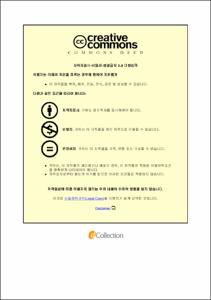역삼투 공정 설계 프로그램의 신뢰성 분석
- Alternative Title
- Reliability analysis of reverse osmosis system projection program
- Abstract
- Reverse osmosis (RO) is the most commonly used process in the desalination. To design the reverse osmosis process, we must use the RO projection program. The RO projection program is provided by the membrane manufacturers. If we determined the reverse osmosis membrane for design, we have to choose a program developed by the manufacturer. This is because programs manufactured by other manufacturers can not design with the membrane. Therefore, the reliability of the results of the RO projection program is important. To verify the reliability of the results, it is best to experiment with all conditions. However, it is difficult to experiment in all conditions. So, we analyze the trends in projection results in some conditions to see if they show reasonable patterns. We use five RO projection programs to test(eg CSMPRO Ver 5.0, IMS Design, ROSA 9.0, LG Chem Nano H2O and Toray DS2). We use 10 different SWRO membranes (five high flux and five low flux membranes) from the manufacturer with five projection programs. In most cases, feed pressure decrease under high temperature conditions. But in some cases, the feed pressure increase under high temperature conditions. This is the reason the increase in osmotic pressure overcomes the increase in water permeability as temperature increased in these simulation conditions. The various rates of change in feed pressure and salt rejection with temperature does not depend on membrane characteristics. There is only one RO projection program that reflect the effect of feed water pH on salt rejection. Therefore, we need to check when we design RO process in the conditions with variable temperature and pH.
- Issued Date
- 2019
- Awarded Date
- 2019. 2
- Type
- Dissertation
- Publisher
- 부경대학교
- Alternative Author(s)
- Jaehak Jung
- Affiliation
- 부경대학교 대학원
- Department
- 대학원 토목공학과
- Advisor
- 김수한
- Table Of Contents
- 1. 서론 1
1.1 연구 배경 1
1.2 연구 가설 2
1.3 연구 내용 5
2. 문헌연구 6
2.1. 해수담수화 6
2.1.1. 해수 담수화 개론 6
2.1.2. 해수 담수화 기원 및 역사 7
2.1.3. 해수 담수화 종류와 방법 8
2.1.4. 해수 담수화 현황 13
2.2 역삼투(RO) 공정 15
2.2.1 역삼투(RO) 공정 이론 15
2.2.2 역삼투(RO) 공정 현황 20
2.2.3 역삼투(RO) 공정 문제점에 따른 개선 방법 23
2.3 통계 및 데이터 처리 29
2.3.1 데이터 분석 개요 29
2.3.2 R 프로그램 33
3. 연구 내용 및 방법 39
3.1 역삼투 공정 시뮬레이션 39
3.1.1 RO projection program 소개 40
3.1.2 시뮬레이션 조건 72
3.1.3 결과 데이터 출력 76
3.2 결과 데이터 정리 78
3.2.1 R 인터페이스 78
3.2.2 R 문법 79
3.2.3 R 코드 설명 81
3.2.4 결과 데이터 비교 87
4. RO projection program 결과 및 분석 88
4.1 제조사별 막에 따른 원수압력과 온도의 관계 분석(19 LMH) 88
4.2 제조사별 막에 따른 원수압력과 온도의 관계 분석(13 LMH) 90
4.3 제조사별 막에 따른 삼투압과 온도의 관계 분석(13 LMH) 92
4.4 제조사별 막에 따른 NDP와 온도의 관계 분석(13 LMH) 93
4.5 제조사별 막에 따른 Normalized NDP와 온도의 관계 분석(13 LMH) 94
4.6 제조사별 막에 따른 염 제거와 온도의 관계 분석 96
4.7 제조사별 막에 따른 염 제거와 pH의 관계 분석 97
5. 결론 및 요약 99
6. 향후 연구 계획 101
- Degree
- Master
- Files in This Item:
-
-
Download
 역삼투 공정 설계 프로그램의 신뢰성 분석.pdf
기타 데이터 / 5.07 MB / Adobe PDF
역삼투 공정 설계 프로그램의 신뢰성 분석.pdf
기타 데이터 / 5.07 MB / Adobe PDF
-
Items in Repository are protected by copyright, with all rights reserved, unless otherwise indicated.